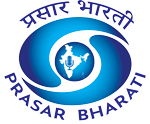India’s Direct Benefit Transfer (DBT) system has resulted in cumulative savings of Rs. 3.48 lakh crore by plugging leakages in welfare delivery, reveals a new report by the BlueKraft Digital Foundation. The findings, endorsed by the Ministry of Finance, underscore the transformative impact of DBT on public spending efficiency, subsidy rationalisation, and social inclusion.
The report evaluates data from 2009 to 2024 and introduces a Welfare Efficiency Index (WEI), a composite metric that tracks fiscal and social outcomes. The index surged nearly threefold—from 0.32 in 2014 to 0.91 in 2023—indicating significant gains in both inclusion and financial efficiency.
The report shows that government subsidies dropped from 16% of total expenditure in 2009–2013 to 9% in 2023–24, even as beneficiary coverage rose dramatically from 11 crore to 176 crore individuals. In the food subsidy sector alone, Aadhaar-linked ration authentication helped save Rs.1.85 lakh crore. In the MGNREGS program, 98% of wages were transferred on time, generating savings of ₹42,534 crore. The PM-KISAN scheme saved ₹22,106 crore by removing 2.1 crore ineligible beneficiaries, while targeted fertilizer disbursement saved Rs. 18,699.8 crore.
The success of the JAM trinity—Jan Dhan accounts, Aadhaar, and mobile connectivity—has enabled transparent, direct transfers and helped eliminate ghost beneficiaries and middlemen.
The Welfare Efficiency Index gives 50% weight to DBT savings, 30% to subsidy reduction, and 20% to beneficiary growth. This multifactor approach demonstrates that India’s efficiency gains are not merely a result of budget cuts but reflect broader systemic improvements.
Although subsidy levels spiked briefly during the COVID-19 pandemic in 2020–21 due to emergency relief measures, the report notes that fiscal discipline was restored soon after, reaffirming DBT’s long-term resilience and effectiveness.
Correlation analysis in the report further supports the efficiency of DBT. There is a strong positive correlation of 0.71 between savings and beneficiary coverage, suggesting that expanding outreach did not compromise financial efficiency. Conversely, a negative correlation of -0.74 between subsidy expenditure and welfare efficiency highlights how DBT has reduced waste while enhancing impact.
The report concludes by presenting DBT as a replicable model for global policymakers aiming to achieve both fiscal prudence and inclusive growth. With governments worldwide rethinking their social protection mechanisms, India’s DBT framework offers a compelling blueprint for transparent and efficient welfare delivery.














